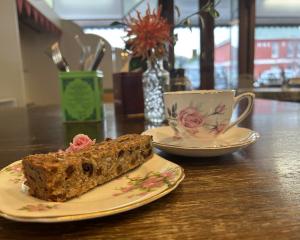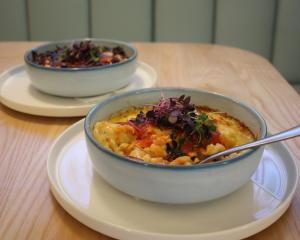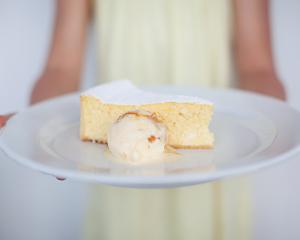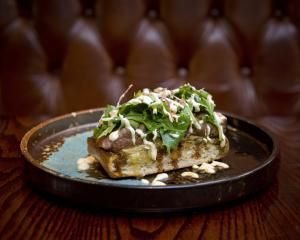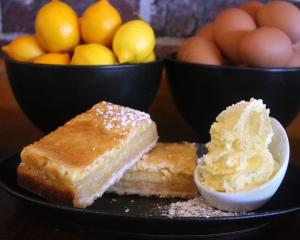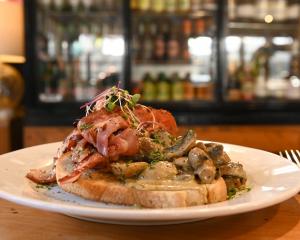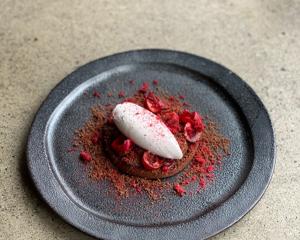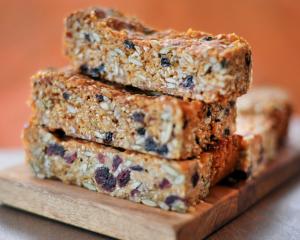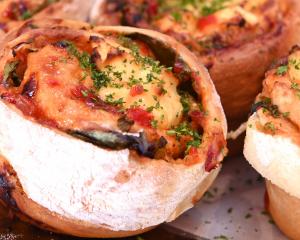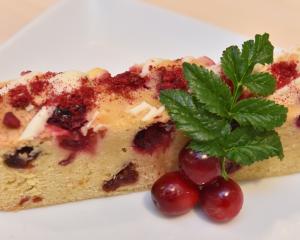
Makes 10-12
Prep time 15 minutes
Cook time 12-13 minutes
Rest time 20 minutes
560g flour
30g sugar
25g baking powder
½ tsp salt (we use Himalayan rock salt)
200g butter (cold, and cut into 1.5cm cubes)
370ml buttermilk
2 eggs (1 reserved for an egg wash pre-cook)
1 cup sweetened citrus peel
1 cup sultanas
Method
1. Put all of the ingredients into a bowl, leaving 1 egg aside, and use a wooden spoon or spatula to combine ingredients as much as possible.
2. On a clean bench, dust some flour, and tip the contents of the bowl out. Knead until all the ingredients are combined, and the scone dough is an even texture throughout — it shouldn't be sticky, so if you need to add more flour, do so.
3. Using a rolling pin, cover lightly in flour to avoid the dough sticking, and roll the dough out to form a rectangle, approximately 40cm x 25cm.
4. Fold the bottom third up over itself, then the top third over the bottom layer, so that you've created three layers.
5. Turn the dough around 90 degrees, and repeat this process two more times. This will create 27 layers.
6. In the final layer, before you fold it in over itself, place whatever you would like to fill it with first and lightly press it into the dough. Fold over top so that the filling is tucked into the scone dough. We use citrus peel and sultanas, but we also love dark chocolate and cranberries, apple and spice sugar (cinnamon, cardamom and white sugar mixed together), or you could make it savory and add cheese.
7. Put the scone dough in the fridge to rest, and while you do that, turn the oven on and allow it to heat up to 230 degrees on fan bake.
8. When the oven is at temp, roll the scone dough back out to a rectangle of approximately 40cm x 25cm. Be careful not to roll it out too thin, as when this happens, the layers don't flake apart as easily.
9. Cut the dough into squares or rectangles. We make them quite large, and get 10 to 12 from this size batch. Get creative.
10. Crack an egg and use a fork to mix it in a bowl, then using a pastry brush, brush the raw egg on to the tops of the scones. If you have a sweet tooth, you can sprinkle some extra sugar on top as well, but we don't think it needs it.
11. Put the scones in the oven and set your timer for 12 minutes. Depending on your oven, it may need an extra minute to get crispy.
12. Let them rest for 5 minutes, then serve with butter or jam.
Note: For this recipe you need to throw out the rules about ‘‘not over mixing'’, and treat the dough like a pastry. This is the main reason why it is important to use very cold butter, so that the butter doesn't melt too much during the kneading process.
- Recipe requested by Sue Gale. Recipe provided by ADJO, Dunedin.
If you have enjoyed a dish in an Otago cafe or restaurant and would like the recipe, write to Ask a Chef, Features, Otago Daily Times, PO Box 517, Dunedin, or email odt.features@odt.co.nz, including your name, address and a daytime telephone number, and we will request it.

